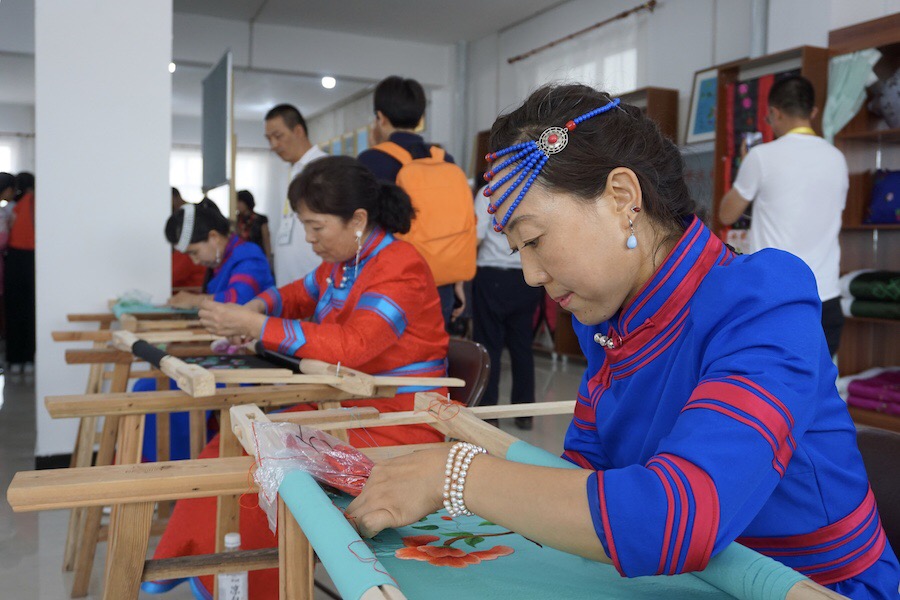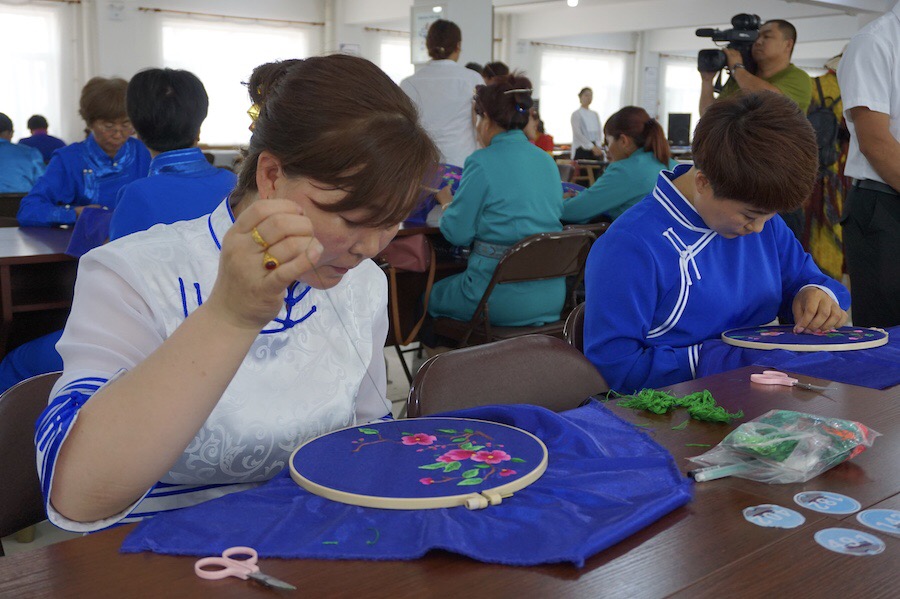Stitching a New Future Together in Inner Mongolia

A worker embroiders at a workshop in Horqin Right Wing Middle Banner, Hinggan League in Inner Mongolia, Aug 2, 2019. [Photo by Li Ping/chinadaily.com.cn]
Inner Mongolia strives to develop the handmade embroidery industry, which has helped poverty alleviation and rural revitalization in the region, and advanced the inheritance and promotion of this intangible cultural heritage, said Bai Yugang, head of the Publicity Department of North China's Inner Mongolia autonomous region.
The remarks were made during the opening of the Conference on Inheritance and Innovation of Chinese Handmade Embroidery in Ulanhot, Hinggan League, Inner Mongolia, on Thursday.
The two-day conference, held from Thursday to Friday, convened around 300 embroiderers, experts and scholars from across the country. They shared views on how to better preserve and promote the traditional craftsmanship in the new era, such as fusing it with modern fashion design.
More than 500 exquisite embroidery works were showcased on the sidelines of the conference, covering 17 embroidery varieties selected nationwide.

Jin Hua, an inheritor of the Mongolian embroidery, shows patterns she stitched on a traditional Mongolian costume in Horqin Right Wing Middle Banner, Hinggan League, Inner Mongolia, Aug 2, 2019. [Photo by Li Ping/chinadaily.com.cn]
Also on Thursday, embroidery companies from Hinggan League's Horqin Right Wing Middle Banner signed cooperation agreements and placed orders with seven enterprises from cities such as Beijing, Hangzhou and Shenzhen. The order value totaled 64 million yuan ($9 million).
Official statistics show the embroidery industry in Horqin Right Wing Middle Banner has helped increase the annual income of 2,895 registered impoverished people by around 2,000 yuan ($290) per person in 2018. The embroidery industry currently provides work to 21,000 people in 173 villages in the banner.
Mongolian embroidery originated in the Qing Dynasty (1616-1912), and is now listed as a state-level intangible cultural heritage in China. The embroidery type is suitable for various fabrics such as cotton, linen, cashmere and silk. Its stitch patterns can be applied on clothing, bags, shoes and suitcases.

An inheritor of Mongolian embroidery stitches a pattern of apricot flowers at her home in Horqin Right Wing Middle Banner, Hinggan League, Inner Mongolia, Aug 2, 2019. [Photo by Li Ping/chinadaily.com.cn]
Qi Chunying, a researcher with Minzu University of China who studies costumes of Chinese ethnic groups, said the competitiveness of Mongolian embroidery is obvious when created on leather. She noted it has large development potential if combined with leather and fashion design.
During the conference, Horqin Right Wing Middle Banner was awarded "Hometown of China's Mongolian Embroidery Culture", as well as the innovation and business start-up demonstration base for Chinese handmade embroidery.
According to Bai Yugang of the publicity department, more than 60 college graduates have returned to their hometown of Horqin Right Wing Middle Banner over the past three years, and started their own businesses to boost the local embroidery industry.

A worker embroiders at a workshop in Horqin Right Wing Middle Banner, Hinggan League, Inner Mongolia, Aug 2, 2019. [Photo by Li Ping/chinadaily.com.cn]

